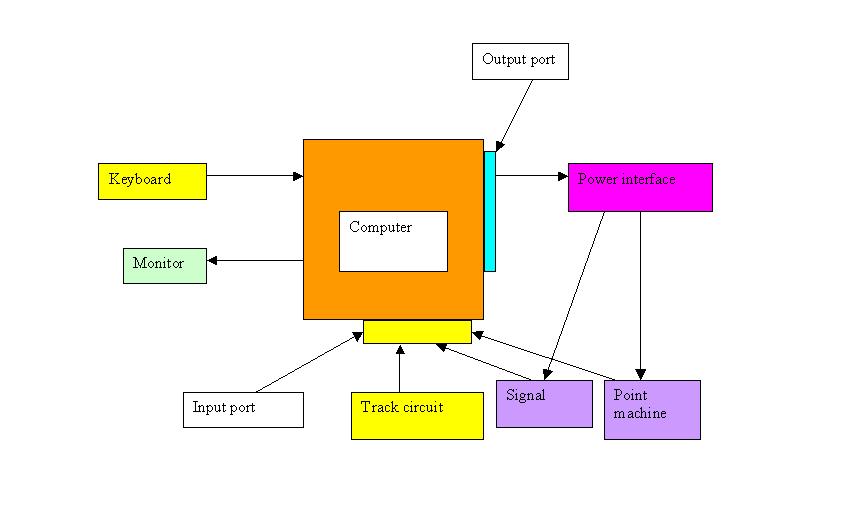

| Home | Railway Signaling Home | Page 3 |
A Look at Solid State Interlocking
Of all the items there is not much that can be done about standard signaling gears to be driven and inputs taken from and so we have leave it same as it is. However in other areas may be we can think of some improvements to match the system with standard hardware. As a first step forget about all the intricacies of a signaling system and just concentrate on the input and output and try to see whether we can use standard hardware and software. Then we can discuss which areas require special efforts to make it compatible for use in application involving human safety as is the case with Railway Signaling.
From computer control application the Railway signaling is quite simple. The process involved in Railway signaling application is as follows:
a) Check for occupancy of trains
b)Check for commands through input buttons/keyboard from train controllers
c) Operate point machines to set routes as desired by train controllers
d) Check position of points and occupancy of tracks (viz track circuits)
e) If command matches safety checked by position of points, track circuits and other movements commanded and yet to be completed by trains clear signal
f) Put back signal to danger when train commanded passes a signal
g) Keep routes in tact till train for which it has been set has passed or it has been established without doubt that the train has come to a stop.
The process mentioned consists of two items in general
a) Commands sent to or received from field gears
b) Logical analysis of the commands received and based on the command generation of signals which the field gears will work with.
Based on the above the simplest Railway Signaling system based on Computers should look like as below:

| Home | Railway Signaling Home | Page 3 |